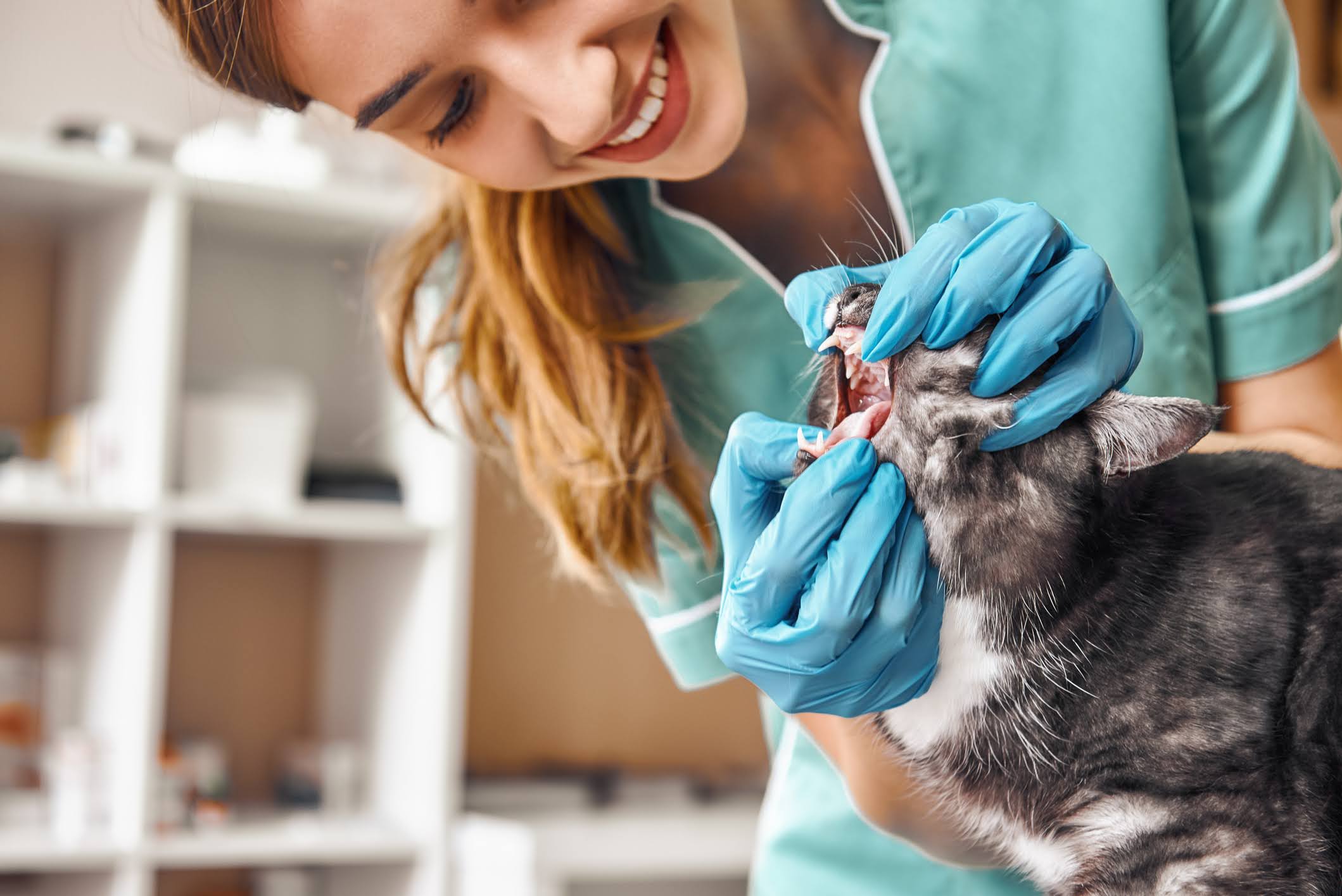The next time you’re debating whether to share a tasty tidbit with your dog or cat, you may want to consider this: 75% of pets over the age of three have dental disease. If left untreated, symptoms such as bad breath and unsightly stains could evolve into something much more serious. That’s why at Bay Country Veterinary Hospital, we believe that good dental health is an essential part of your pet’s overall wellness plan.
Genetics and environment each play a role in the health of your pet’s teeth over time. Unlike pet vaccinations, there is no set schedule or rule as to when your dog or cat may need additional dental care. That said, here are some warning signs that could indicate your pet has a problem:
- Bad breath (this is one of the first signs of pet dental disease)
- A yellowish-brown crust of plaque on the teeth near the gum line
- Red/swollen gums
- Pain or bleeding when your pet eats or when his or her mouth or gums are touched
- Decreased appetite or difficulty eating
- Loose or missing teeth
If a pet has any of these symptoms, it could be a sign of periodontal disease. This is a painful inflammatory condition in which bacteria attack the gums, ligaments, and bones that surround and support the teeth. If this condition goes untreated, bacteria from an oral infection could enter the pet’s bloodstream and vital organs, potentially causing life-shortening damage to the pet’s lungs, heart, kidneys, liver, and even the brain. Thankfully, this outcome can be avoided.


